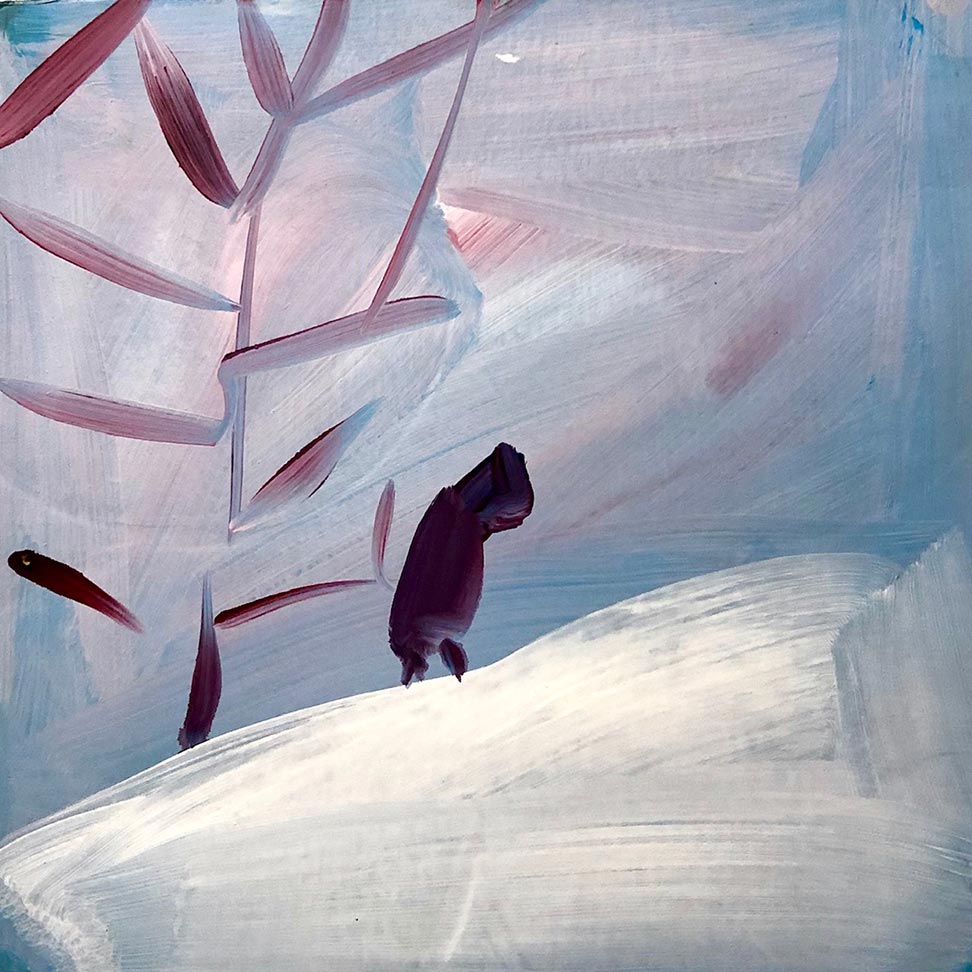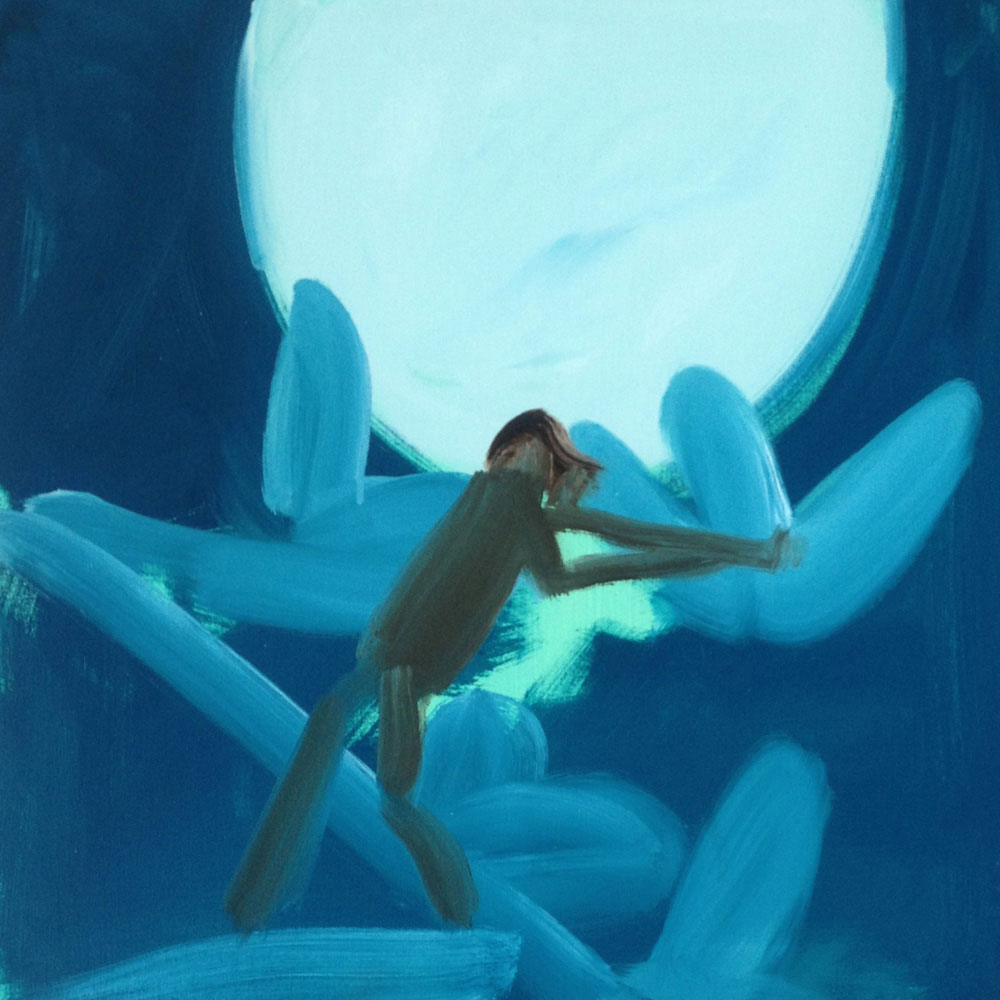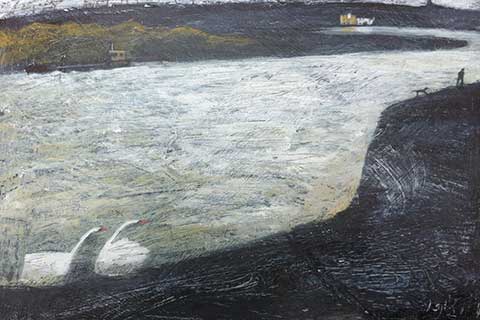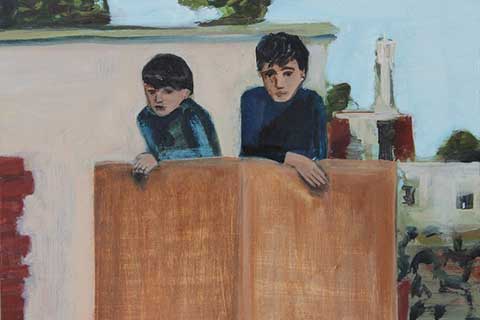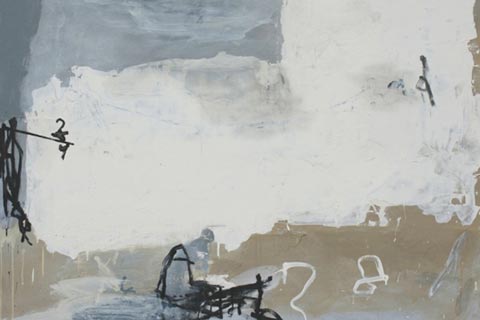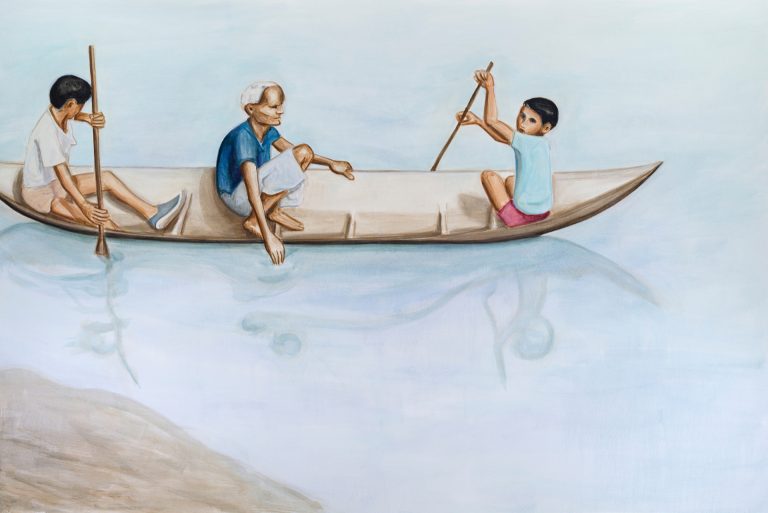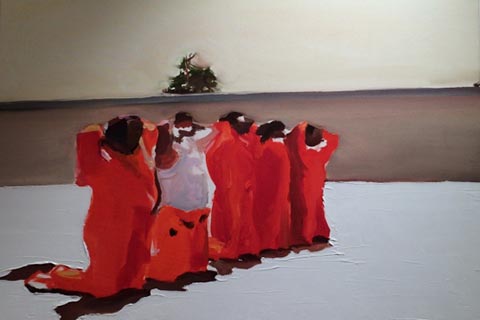Susie Hamilton in conversation with Robert Priseman
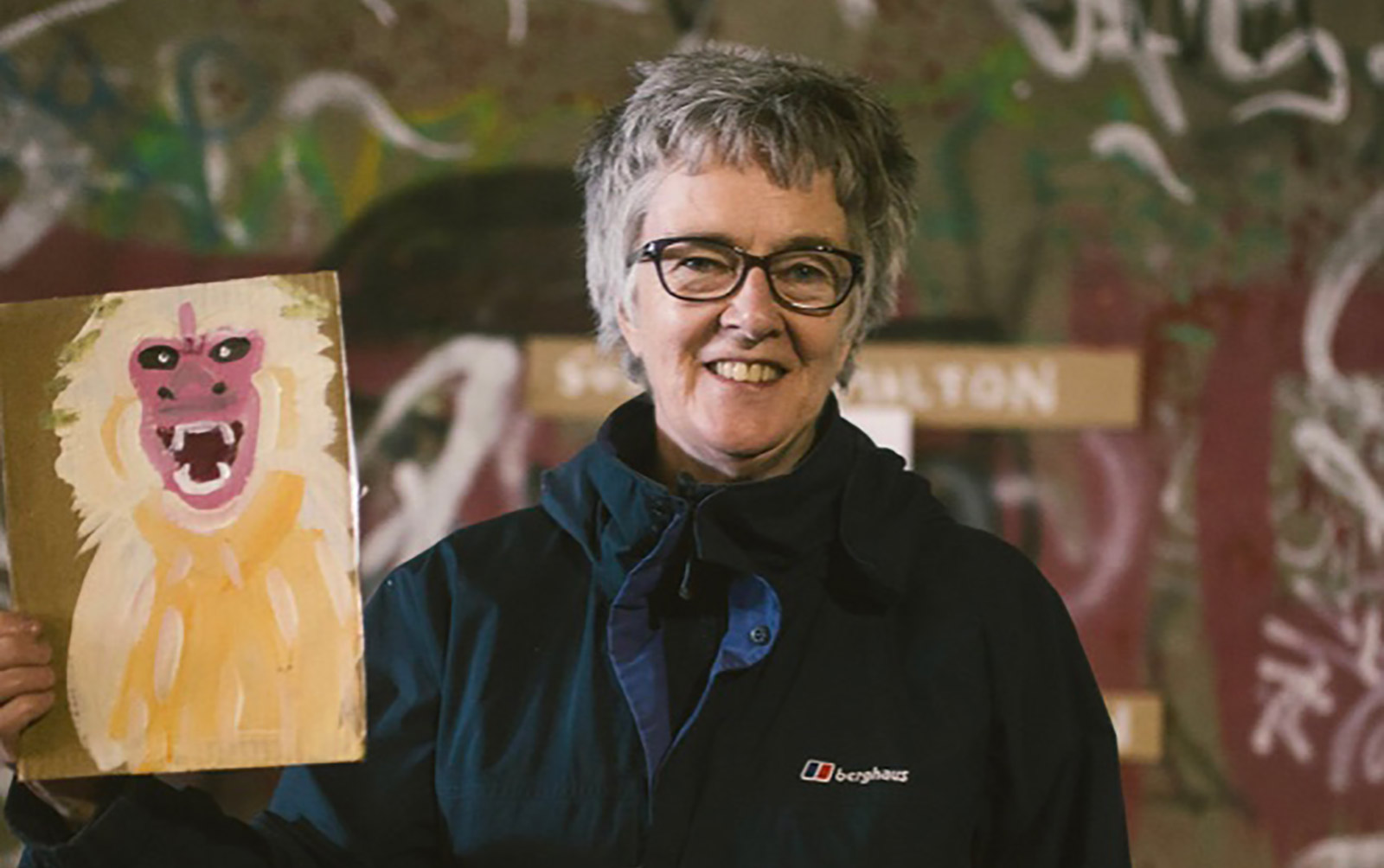
Susie Hamilton in conversation with Robert Priseman
Robert Priseman: I’d like to begin by asking you to talk about the core theme which unites your work. You seem to be interested in an underlying concept that we experience the universe in a fundamentally existentialist way. Is that true?
Susie Hamilton: Yes I think that is true in the sense that I often paint wandering outsiders. They are on some sort of quest in the bleak world around them. This can be bleakness of wintry nature or the impersonal spaces of modern urban life. Like Heidegger’s humans, they are “thrown” into the world and have to forge their own autonomous existence.
And this existentialist desire to be autonomous and authentic, crucial to Sartre and Camus as well as Heidegger, reminds me that my figures sometimes have a look of self-contained independence. I think that this is partly because I draw them from life and I have to “spy” on them while they are unaware of me. Consequently they are not looking at a spectator but are absorbed in their own purposes. Also, because I have to draw them quickly, I condense and abbreviate bodies which may give them a look of misshapen, even grotesque, singularity.
Then the nameless oddness of things that Roquentin experiences in Sartre’s Nausea appeals to me. For him names are suddenly removed from objects, the word will not stick to the thing and the world around him becomes alien and fearful. For me, this dimension is not unreligious (despite the atheism of much existentialism). My wandering figures are surrounded by mystery and fear which owes as much to the Biblical desert or to the opening of Pilgrims Progress (“As I walked through the wilderness of this world”) as to Sartre and Camus.
Finally, choice, the crucial burden of existentialism, in the sense that we have to create ourselves at each moment through the right choices, affects my paintings of solitary figures in sunlight: figures casting shadows which inscribe them in time and space and show them as creatures of limit and possibly regret, inevitably pinned to one place at one time.
RP: Whilst many of your paintings focus on the individual figure, you also have series which examine large groups, such as your ‘Hens’ and ‘Beach’ paintings. Is the idea that we are social beings important to you and if so how?
SH: The idea that we are social beings is important to me but as a source of conflict. Going back to your reference to existentialism, society can be a place of the inauthentic. I’m thinking of Heidegger’s “Gerede” (or gossip), Sartre’s ‘bad faith’ or “L’enfer c’est les autres” or the anti-hero of Dostoyevsky’s Notes from Underground who is apart from society. My ‘Dining Room’ paintings are of people dissipated in small talk or dilapidated by the presence of each other. They are not keeping their own shape but are reduced to blots or empty signs. And while my partying Hens are festive, there’s usually an outsider Hen, misshapen and awkward, who is tacked onto the others or standing alone in the street.
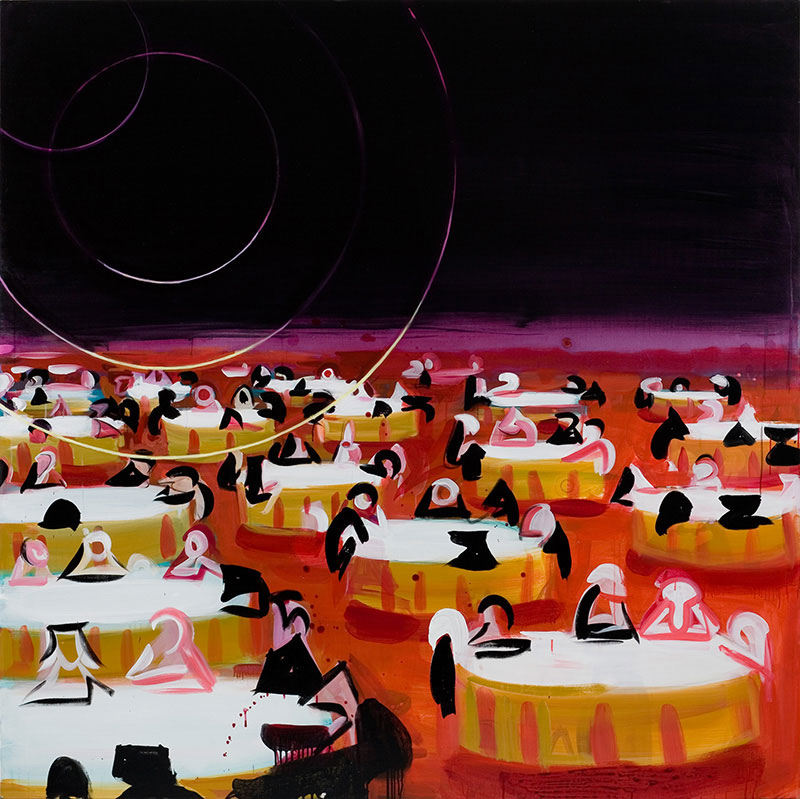
RS: Your palette appears to be quite bright and joyful, certainly in terms of painting the human form, yet there is also a sense of surrounding darkness or void in your paintings. Can you expand?
SH: Yes it is joyful at times, especially in paintings of birds and “flying” monkeys. Unlike my figures trudging along the ground, these creatures are not earthbound or restrained. Yet my bright colour, whether used in painting birds or humans, can be painful or toxic with its synthetic pinks and limes. And the bright light that is made by these colours is not very comfortable. “Shoppers” and “Diners” are exposed in a blinding glare.
And yes, the figures can be surrounded by a void, either a black one as in the “Dining Rooms” and “Beaches” or the white void of paper in my Moroccan drawings and paintings. I like to introduce emptiness into paintings but this is not necessarily nihilistic. To me it suggests something unknown and full of possibility. Similarly the figures themselves can have this “empty” quality since they are often painted as silhouettes or as white shapes blitzed by light. When we try to look into them there is something hidden and obscured.
RP: Do you have a specific set of colours you always use?
SH: I do tend to go back to the sherbet colours that I mentioned before. I tend to use secondary colours then make them into “seaside” pastels by adding white. I like cool purples and lemons and turquoises brought together in a sour, pastel clash. And I like their opacity, again to suggest something concealed. Sometimes I use these closely-toned, pale colours on their own, often I use black as a contrast. This started when I made night paintings of motorways and petrol stations with neon signs against black sky.
RP: Your paintings appear to be executed in a very rapid manner. As with a lot of painters who work in this style, are your paintings executed far more slowly than they appear to be, or, like van Gogh, do you manage to produce complete works in one sitting?
SH: I do work rapidly, especially when drawing and painting from life, as on the street in Fez or Marrakech. In the studio I also make paintings quickly, though not as quickly. I usually do preparatory drawings and works on paper. I then start on the painting which sometimes seems to work in one go but sometimes it doesn’t and I have to paint over it and start again. I like the finished painting to have the decisiveness and freshness of the drawings but this can mean that I destroy a lot of work that looks muddy or ponderous.
RP: Do you paint everyday?
SH: Yes, almost. If I’m not in the studio I’m usually drawing from life in a shopping mall or park or supermarket. Recently I’ve been drawing in St. Paul’s Cathedral.
RP: Who do you regard as your artistic influences?
SH: There are very many… Bosch, Bruegel, de Chirico, Picasso, Twombly, Kitaj, Darger, Warhol, Bacon, Ofili and more.
RP: If you could sum up your core message in one sentence, what would it be?
SH: I like to move the figurative towards the abstract in a painting in order to suggest the named and familiar morphing into the mysterious and unfamiliar.
March 2015



